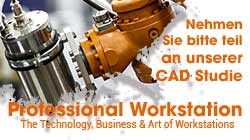
SSD drives are fast. Faster than traditional HDD storage. What are some of your options in a workstation today?
SSD storage has been mainstream, albeit expensive, for well over 2 years. We've seen pure SSD drives and hybrid SSD+HDD options as popular options in workstations.
PW has had a look at the new Intel Skylake desktop workstations and we have some of the new Skylake mobile workstations in our offices now. Both are loaded with SSD storage options. HDD solutions still provide higher capacity and a lower price. For example, on a Dell Precision 7710 workstation with a 512 GB SATA HDD, you will pay a $400 premium to move to a SATA SSD, and a $500 premium to move to the same capacity M.2 NVMe SSD solution.
But the $500 could be money well spent. A high-performance workstation at its best is always a well-balanced workstation. It does no good to have the most powerful processor or GPU if the memory or the storage is holding back the system. PW has looked at application performance on NVIDIA Quadro graphics for video editing (Which NVIDIA Quadro for Adobe Video?) and the result was clear. The benefit of GPU performance leveled off at a mid-range Quadro K1200. On the other hand, overall application performance - loading, saving, rendering - benefits from faster storage. And if you are still using HDD technology in your workstation, then moving to an SSD solution is very likely to give your system more performance than investing in a faster GPU or CPU.
 If you are upgrading to a Skylake system, then your workstation vendor has multiple SSD options tested and ready for you. If you are updating your existing workstation, then oen of two solutions makes sense. One is to use a SATA SSD solution. This option provides a good performance boost even though it doesn't leverage the full performance of SSD technology. The benefit is standardization and compatibility. The second option is an M.2 NVMe (Non-Volatile Memory Express) solution.
If you are upgrading to a Skylake system, then your workstation vendor has multiple SSD options tested and ready for you. If you are updating your existing workstation, then oen of two solutions makes sense. One is to use a SATA SSD solution. This option provides a good performance boost even though it doesn't leverage the full performance of SSD technology. The benefit is standardization and compatibility. The second option is an M.2 NVMe (Non-Volatile Memory Express) solution.
The long and short of it is this. SATA SSDs are readily available and can be plugged into nearly every desktop workstation. The SATA interface, however, was not designed with high-performance, low-latency SSD memory in mind, so it doesn't release the full potential of the SSD storage. The NVMe interface allows the SSD drive to sit directly on the PCI Express bus. Additionally, the NVMe interface protocol has been created specifically to support the lower latency and higher bandwidth of SSD storage solutions.
To touch on the history of SSD storage, the technology has been around and in use for the last 4 decades. It is only recently that the density of the storage and the prices have made the solution attractive to mainstream workstation customers. The NVM Express industry group is significantly younger. The NVMe 1.0 specification was released in 2011.
PW Perspective:
The best option for a new system is NVMe SSD drives. For older systems, a SATA SSD solution will be very compatible. It is possible to find PCIe and M.2 NVMe solutions for some older systems but you will want to check for compatibility issues. The new NVMe interface is an open, hardware independent industry standard which seems to enjoy significant developer support and will likely be the interface of choice for many years. Investing in faster storage solutions based on NVMe makes a lot of sense.





